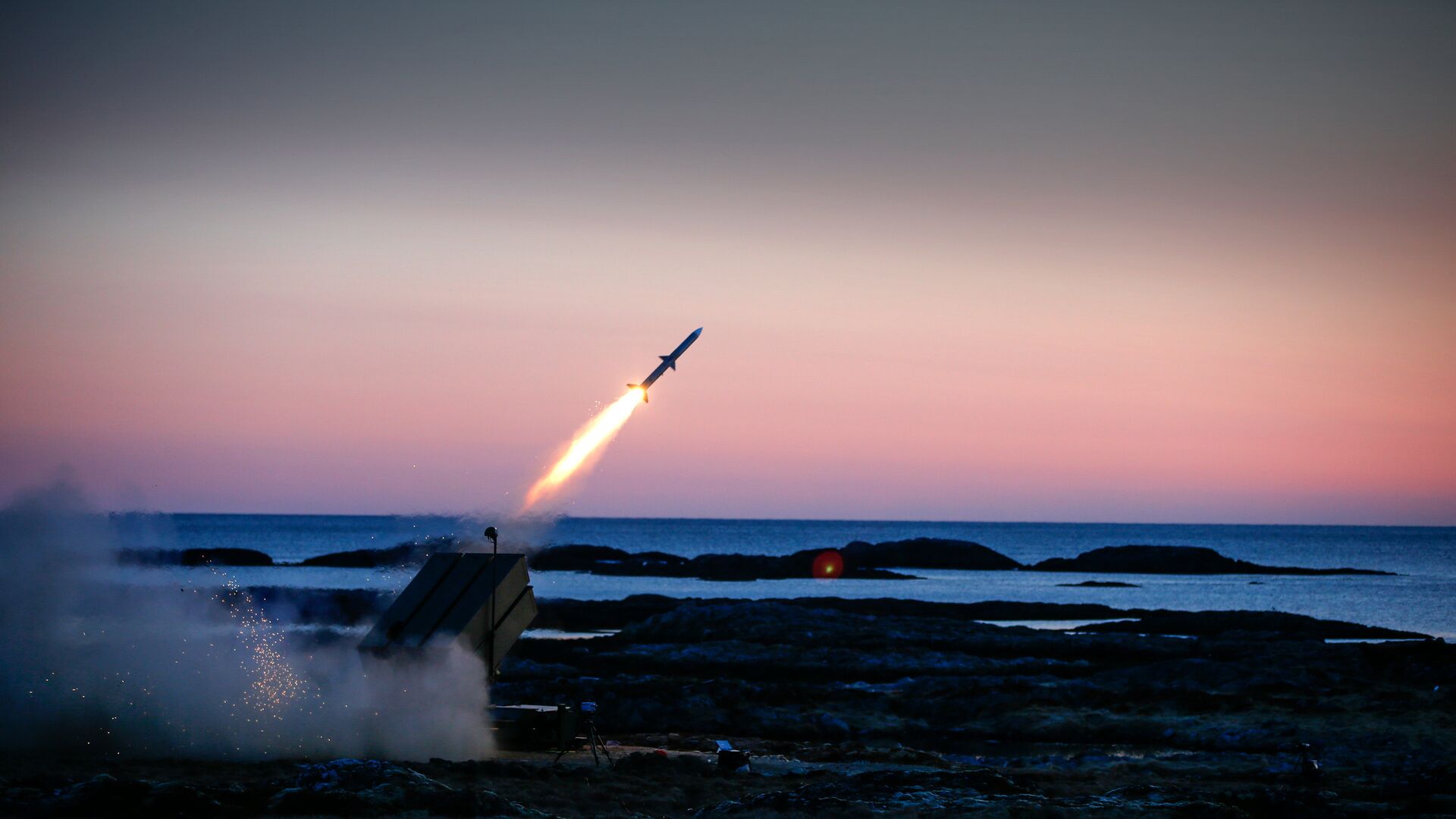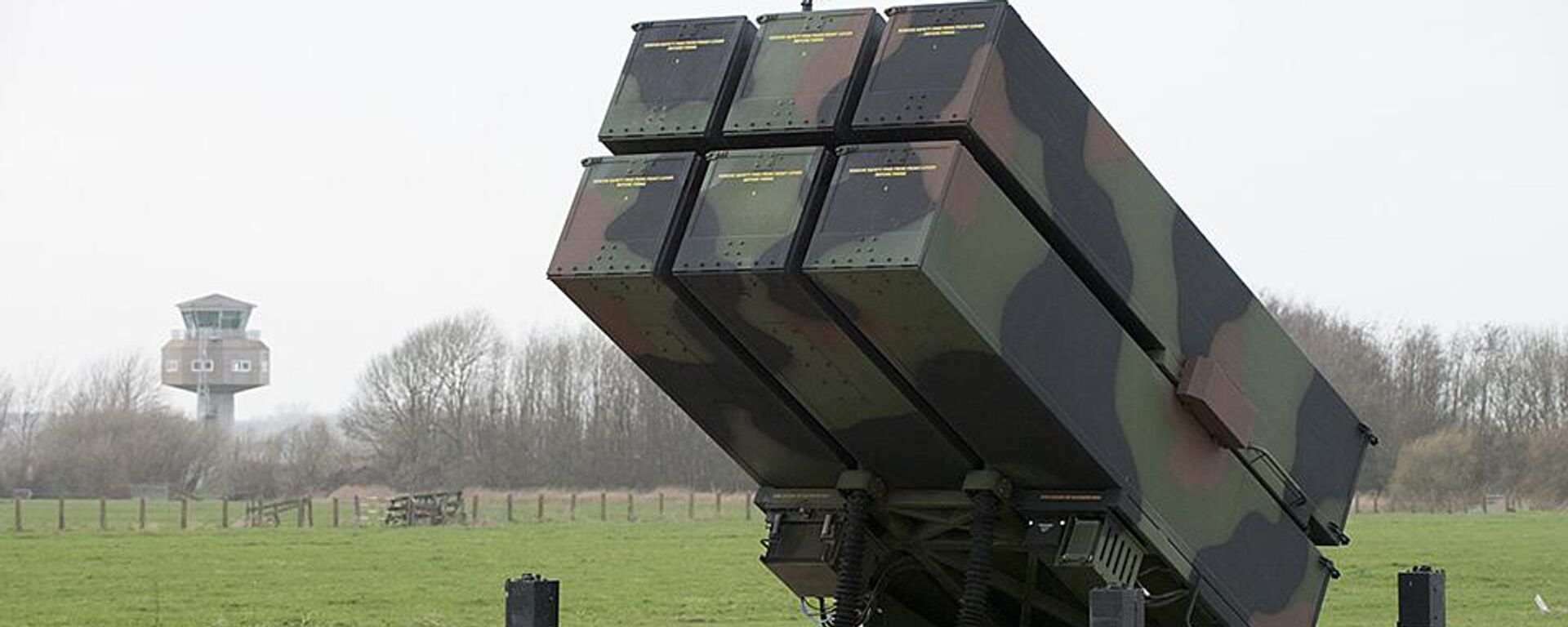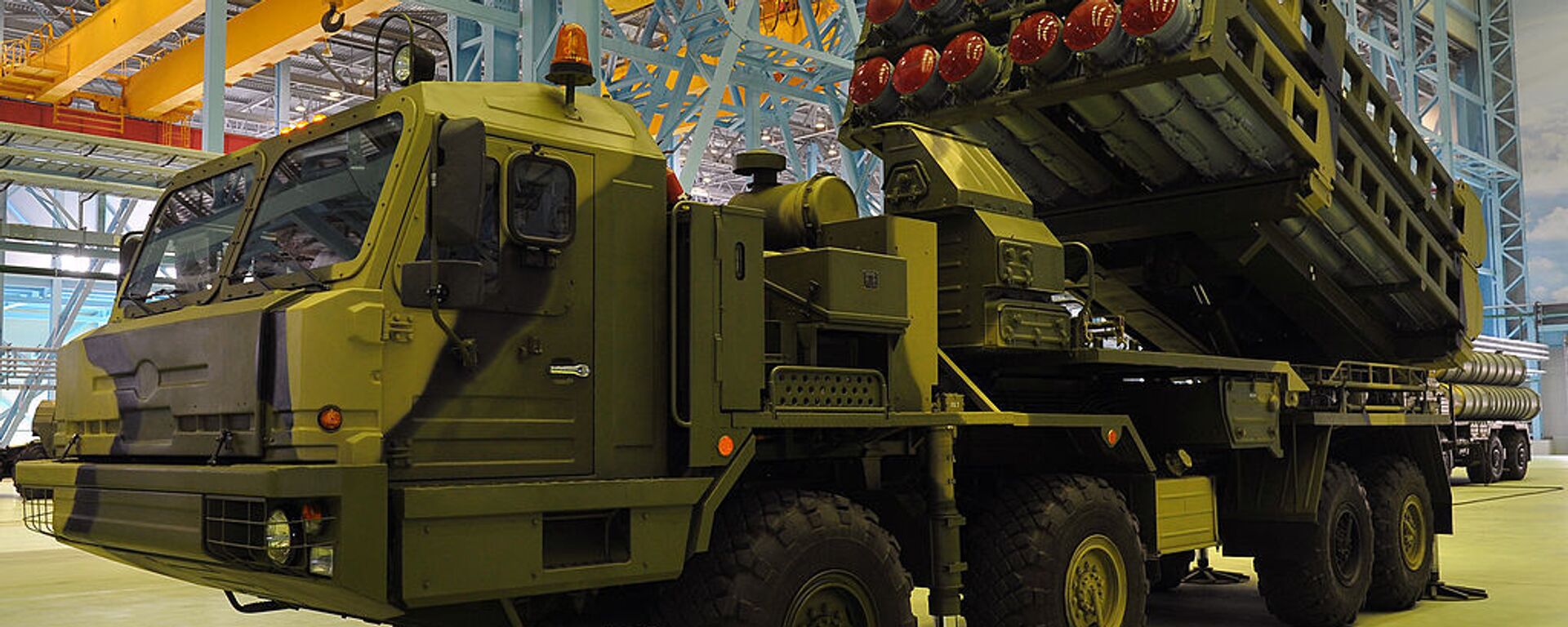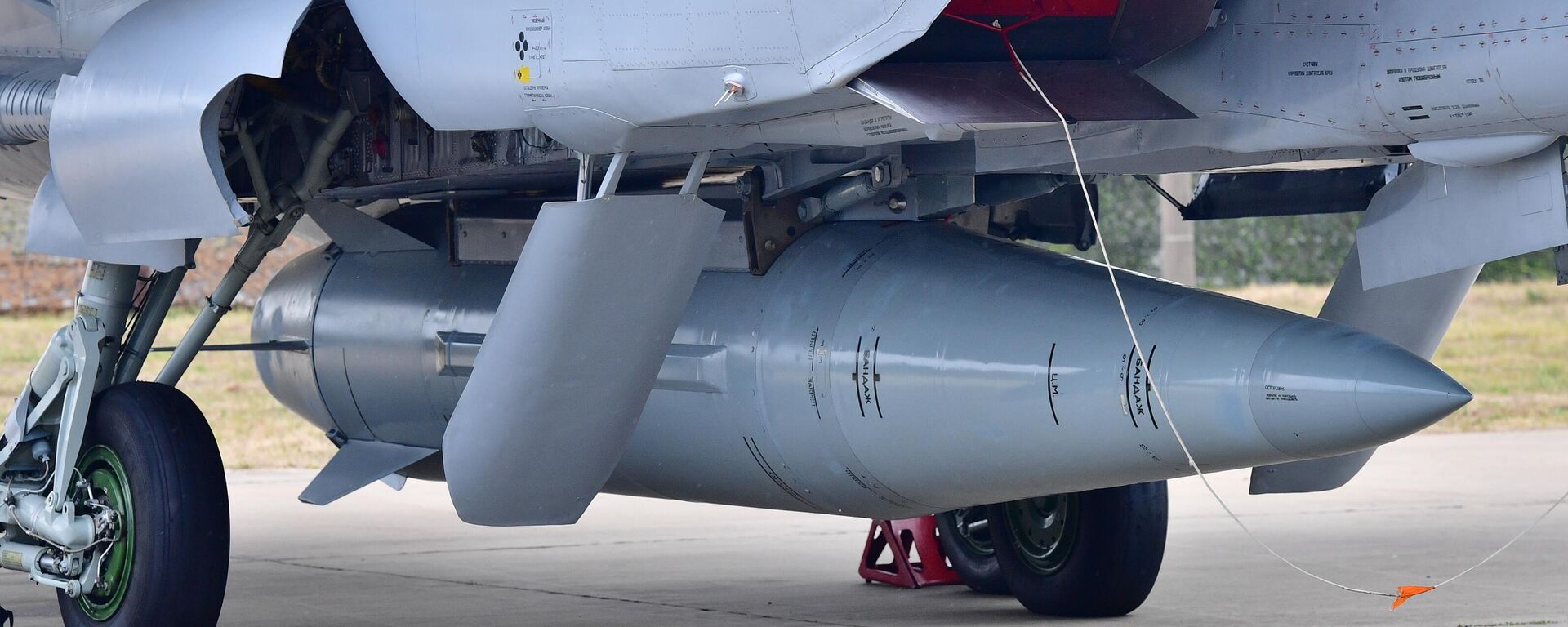https://sputnikglobe.com/20230525/was-nasams-successful-in-ukraine-1110585927.html
Was NASAMS Successful in Ukraine?
Was NASAMS Successful in Ukraine?
Sputnik International
The US State Department approved a sale of the National Advanced Surface-to-Air Missile System (NASAMS) to Ukraine on May 24. What's NASAMS and is it really invincible?
2023-05-25T16:23+0000
2023-05-25T16:23+0000
2023-05-25T16:23+0000
sputnik explains
raytheon
nato
ukraine
kiev
russia
sergey lavrov
nasams
advanced medium range air-to-air missiles (amraam)
patriot
https://cdn1.img.sputnikglobe.com/img/104570/33/1045703318_0:35:2700:1554_1920x0_80_0_0_f176bd5a3356c9ea5d69f6f08295dcf9.jpg
On Wednesday, the Defense Security Cooperation Agency notified the US Congress about a sale of medium-range air defense system NASAMS and related equipment for an estimated cost of $285 million to the Kiev regime.The announcement came after Russia's Kinzhal hypersonic missile knocked out a multifunctional radar station and five launchers of the US-made Patriot anti-aircraft missile system in Kiev on May 16, 2023.What is NASAMS Used for?The ground-based air defense system was developed by Kongsberg Defence & Aerospace (KDA) and Raytheon to detect, track, intercept and destroy enemy fixed and rotary wing aircraft, unmanned aerial vehicles and emerging cruise missile threats.What are the Components of the NASAMS?One NASAMS system is equipped with three multi-missile launchers (LCHR), each of which carries up to six AIM-120 AMRAAM missiles. The mobile launchers are connected to the Fire Distribution Center (FDC) and can be placed at a distance of up to 25 km from the FDC. A battalion may consist of up to 12 launchers carrying 72 missiles, all of which could be fired in less than 15 seconds against different targets.The modular NASAMS system comprises of:· AN/MPQ-64 Sentinel radar;· Kongsberg Defense and Aerospace’s FDC;· Launcher;· Raytheon’s suite of effectors, including the Advanced Medium Range Air-to-Air Missile, or AMRAAM, Advanced Medium Range Air-to-Air Missile Extended Range, or AMRAAM-ER, and AIM-9X.The AN/MPQ-64 Sentinel is radar that alerts air defenses about approaching hostile warplanes, choppers, drones or missiles, as well as the range, bearing and elevation of the objects it is tracking. Radar track range is 120 km.The Fire Distribution Center (FDC) is the command and control (C2) node of the NASAMS Air Defense System; it ensures the functionality of the complex encompassing over 10 different sensors and data links and enables full interoperability with national, EU and NATO forces.What are NASAMS Missiles?The AIM-120 AMRAAM (Advanced Medium-Range, Air-to-Air Missile) is a dual-role missile used in both air-to-air and surface-launch engagements. The missile boasts an all-weather, beyond-visual-range capability, an effective firing range of 30 km and flight altitude of 21 km (when fired from ground-based NASAMS).The missile system has also been integrated onto the F-15A/B/C/D/E Eagle/Strike Eagle, F-16 Fighting Falcon, F/A-18 Super Hornet, F-22 Raptor, and other weapons. The newest version of AMRAAM is used by F-35 Joint Strike Fighters. As per Raytheon, AMRAAM is the only radar-guided, air-to-air missile authorized to fly on the F-35.The AMRAAM-Extended Range (ER) missile is a new ground-launched solution capable of intercepting targets at longer distances (50 km) and higher altitudes (35.7 km).Who Uses NASAMS?According to Raytheon, NASAMS is operated by 13 countries, including the US, Norway, Finland, Spain, The Netherlands, Oman, Lithuania, Indonesia, Australia, Qatar, Hungary, Ukraine and one undisclosed country.Who Gave NASAMS to Ukraine?The US delivered the first two NASAMS systems to Ukraine in early October 2022, according to Greg Hayes, chief executive of NASAMS manufacturer Raytheon. The systems were armed with the AIM-120 Advanced Medium-Range Air-To-Air Missile (AMRAAM).All in all, the Pentagon promised to provide Kiev with eight NASAMS systems and an unspecified amount of ammunition. In order to deliver additional six air defense systems to Ukraine, the Pentagon signed a $1.2 billion contract with Raytheon Technologies. It was reported that the estimated completion date would be November 28, 2025.In January 2023, the Canadian government announced that it would buy one US-made NASAMS system and donate it to Kiev. In March 2023, it was reported that Norway will deliver two NASAMS systems to Ukraine. Oslo previously provided equipment to the Kiev regime and helped train Ukrainian forces on how to use US-supplied NASAMS.NASAMS vs PatriotThe NASAMS is a medium-range air defense system which is commonly used for protecting small ground areas and specific targets, while the MIM-104 Patriot is a long-range air defense complex designed to protect larger areas, such as military bases or cities.With an effective firing range of about 30 km, the NASAMS is meant to primarily target enemy drones, aircraft and cruise missiles. By contrast, the Patriot has a larger firing range (about 160 km) and fights against tactical ballistic missiles, as well as cruise missiles, and various types of aircraft. Neither of these systems, however, is capable of withstanding a strike by an advanced hypersonic missile.Have NASAMS Proven Effective in Ukraine?There is little evidence to suggest that the two NASAMS systems provided to Ukraine by the US have provided much of a boost on the battlefield, especially given that one of them was destroyed by Russia in early February 2023."In the area of the settlement of Krasnoarmeysk, Donetsk People's Republic, a Tochka-U tactical missile launcher and a NASAMS anti-aircraft missile system made in Norway were destroyed," the Russian Ministry of Defense (MoD) told the Russian press on February 3.In an apparent bid to improve Ukraine's air defenses, the US promised last year to deploy the MIM-104 Patriots in Ukraine. In December 2022, the first Patriot system was delivered to Ukraine. In April 2023, the second US-made Patriot missile systems arrived in Kiev. However, just a month later, one of them was destroyed by Russia's Kinzhal.Last fall, Moscow warned NATO member states against stepping up military supplies to Ukraine. Russian Foreign Minister Sergey Lavrov said at the time that foreign weapons deployed on Ukrainian territory as well as military cargo would become a legitimate target for Russia. The Foreign Ministry stated that the alliance is "playing with fire" by supplying weapons to the Kiev regime.
https://sputnikglobe.com/20230524/pentagon-state-dept-approves-285-million-sale-of-nasams-air-defense-systems-to-ukraine-1110572082.html
https://sputnikglobe.com/20230110/canada-purchase-of-nasams-for-ukraine-ridiculous-amid-domestic-issues---russian-envoy-1106208647.html
https://sputnikglobe.com/20230524/why-is-russias-s-350-vityaz-air-defense-system-better-than-us-made-patriot-1110556816.html
https://sputnikglobe.com/20230517/unstoppable-kinzhal-one-us-made-patriot-cracked-up-more-to-come-1110424287.html
ukraine
kiev
russia
Sputnik International
feedback@sputniknews.com
+74956456601
MIA „Rossiya Segodnya“
2023
News
en_EN
Sputnik International
feedback@sputniknews.com
+74956456601
MIA „Rossiya Segodnya“
Sputnik International
feedback@sputniknews.com
+74956456601
MIA „Rossiya Segodnya“
nasams vs patriot, nasams ukraine, nasams system, nasams, nasams air defense system, nasams missile, nasams cost, was nasams successful in ukraine, what are nasams missiles, nasams
nasams vs patriot, nasams ukraine, nasams system, nasams, nasams air defense system, nasams missile, nasams cost, was nasams successful in ukraine, what are nasams missiles, nasams
Was NASAMS Successful in Ukraine?
The US State Department approved a sale of the National Advanced Surface-to-Air Missile System (NASAMS) to Ukraine on May 24. What's NASAMS and is it really invincible?
On Wednesday, the Defense Security Cooperation Agency notified the US Congress about a sale of
medium-range air defense system NASAMS and related equipment for an estimated cost of $285 million to the Kiev regime.
The announcement came after Russia's Kinzhal hypersonic missile knocked out a multifunctional radar station and five launchers of the US-made Patriot anti-aircraft missile system in Kiev on May 16, 2023.
The ground-based air defense system was developed by Kongsberg Defence & Aerospace (KDA) and Raytheon to detect, track, intercept and destroy enemy fixed and rotary wing aircraft,
unmanned aerial vehicles and emerging cruise missile threats.
What are the Components of the NASAMS?
One NASAMS system is equipped with three multi-missile launchers (LCHR), each of which carries up to six AIM-120 AMRAAM missiles. The mobile launchers are connected to the Fire Distribution Center (FDC) and can be placed at a distance of up to 25 km from the FDC. A battalion may consist of up to 12 launchers carrying 72 missiles, all of which could be fired in less than 15 seconds against different targets.
The modular NASAMS system comprises of:
· AN/MPQ-64 Sentinel radar;
· Kongsberg Defense and Aerospace’s FDC;
· Raytheon’s suite of effectors, including the Advanced Medium Range Air-to-Air Missile, or AMRAAM, Advanced Medium Range Air-to-Air Missile Extended Range, or AMRAAM-ER, and AIM-9X.
The AN/MPQ-64 Sentinel is radar that alerts air defenses about approaching hostile warplanes, choppers, drones or missiles, as well as the range, bearing and elevation of the objects it is tracking. Radar track range is 120 km.
The Fire Distribution Center (FDC) is the command and control (C2) node of the NASAMS Air Defense System; it ensures the functionality of the complex encompassing over 10 different sensors and data links and enables full interoperability with national, EU and NATO forces.
The NASAMS system recently requested by Ukraine includes: one (1) AN/MPQ-64F1 Sentinel Radar; a Fire Distribution Center (FDC); as well as canister launchers, secure communications, GPS receivers, code loaders, and cable sets; tool kits; test equipment; support equipment; prime movers; generators; technical documentation; spare parts; the package also includes US Government and contractor technical support; and other related elements of logistics and program support, according to the Defense Security Cooperation Agency.

10 January 2023, 22:47 GMT
What are NASAMS Missiles?
The AIM-120 AMRAAM (Advanced Medium-Range, Air-to-Air Missile) is a dual-role missile used in both air-to-air and surface-launch engagements. The missile boasts an all-weather, beyond-visual-range capability, an effective firing range of 30 km and flight altitude of 21 km (when fired from ground-based NASAMS).
The missile system has also been integrated onto the F-15A/B/C/D/E Eagle/Strike Eagle, F-16 Fighting Falcon, F/A-18 Super Hornet, F-22 Raptor, and other weapons. The newest version of AMRAAM is used by F-35 Joint Strike Fighters. As per Raytheon, AMRAAM is the only radar-guided, air-to-air missile authorized to fly on the F-35.
The AMRAAM-Extended Range (ER) missile is a new ground-launched solution capable of intercepting targets at longer distances (50 km) and higher altitudes (35.7 km).
According to Raytheon, NASAMS is operated by 13 countries, including the US, Norway, Finland, Spain, The Netherlands, Oman, Lithuania, Indonesia, Australia, Qatar, Hungary, Ukraine and one undisclosed country.
Who Gave NASAMS to Ukraine?
The US delivered the first two NASAMS systems to Ukraine in early October 2022, according to Greg Hayes, chief executive of NASAMS manufacturer Raytheon. The systems were armed with the AIM-120 Advanced Medium-Range Air-To-Air Missile (AMRAAM).
All in all, the Pentagon promised to provide Kiev with eight NASAMS systems and an unspecified amount of ammunition. In order to deliver additional six air defense systems to Ukraine, the Pentagon signed a $1.2 billion contract with Raytheon Technologies. It was reported that the estimated completion date would be November 28, 2025.
In January 2023, the Canadian government announced that it would buy
one US-made NASAMS system and donate it to Kiev. In March 2023, it was reported that Norway will deliver two NASAMS systems to Ukraine. Oslo previously provided equipment to the Kiev regime and helped train Ukrainian forces on how to use US-supplied NASAMS.
The NASAMS is a medium-range air defense system which is commonly used for protecting small ground areas and specific targets, while the MIM-104 Patriot is a long-range air defense complex designed to protect larger areas, such as military bases or cities.
With an effective firing range of about 30 km, the NASAMS is meant to primarily target enemy drones, aircraft and cruise missiles. By contrast, the Patriot has a larger firing range (about 160 km) and fights against tactical ballistic missiles, as well as cruise missiles, and various types of aircraft. Neither of these systems, however, is capable of withstanding a strike by an advanced hypersonic missile.
Have NASAMS Proven Effective in Ukraine?
There is little evidence to suggest that the two NASAMS systems provided to Ukraine by the US have provided much of a boost on the battlefield, especially given that one of them was destroyed by Russia in early February 2023.
"In the area of the settlement of Krasnoarmeysk, Donetsk People's Republic, a Tochka-U tactical missile launcher and a NASAMS anti-aircraft missile system made in Norway were destroyed," the Russian Ministry of Defense (MoD) told the Russian press on February 3.
According to Russian military experts, NASAMS have been incapable of protecting Ukraine's forces on the front line. The medium-range defense systems were largely meant to provide air cover for US-made offensive weapons, such as the HIMARS battery. However, the NASAMS is incapable of intercepting Russia's Kalibr and Iskander missiles, let alone the Kinzhal hypersonic missile system.
In an apparent bid to improve Ukraine's air defenses, the US promised last year to deploy the MIM-104 Patriots in Ukraine. In December 2022, the first Patriot system was delivered to Ukraine. In April 2023, the second US-made Patriot missile systems arrived in Kiev. However, just a month later, one of them was
destroyed by Russia's Kinzhal.
Last fall, Moscow warned NATO member states against stepping up military supplies to Ukraine. Russian Foreign Minister Sergey Lavrov said at the time that foreign weapons deployed on Ukrainian territory as well as military cargo would become a legitimate target for Russia. The Foreign Ministry stated that the alliance is "playing with fire" by supplying weapons to the Kiev regime.





